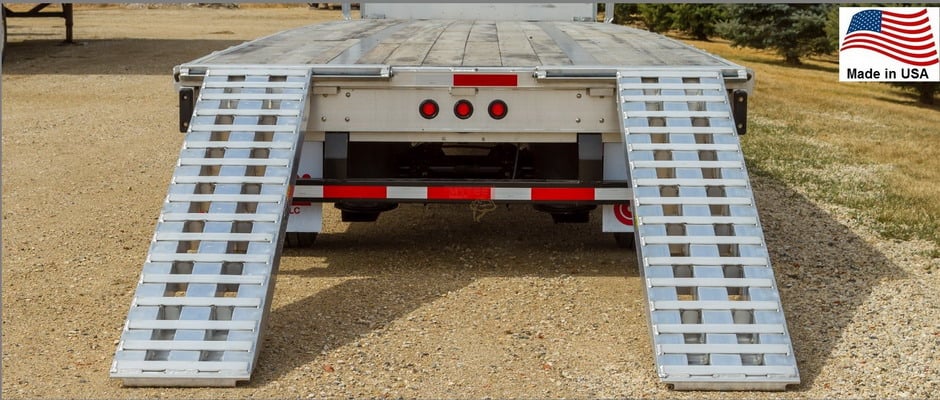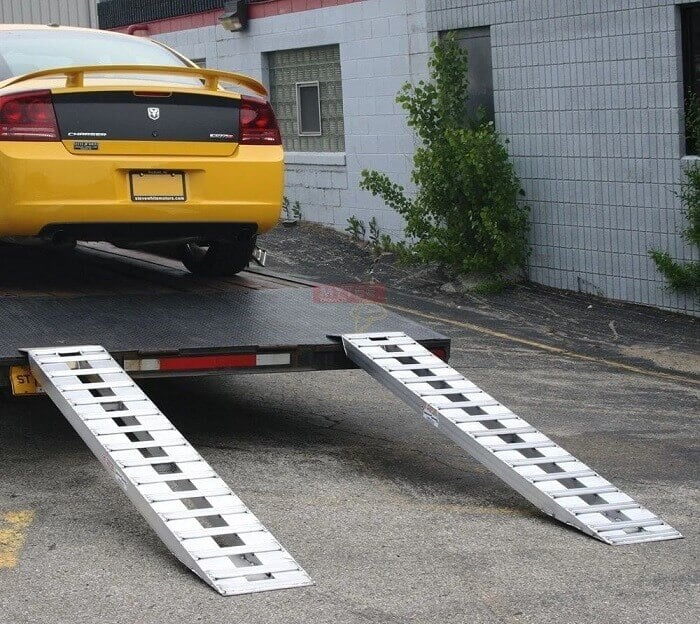Loading heavy vehicles onto a step-deck trailer is one of the most dangerous jobs in flatbed trucking. Both truck drivers and yard workers have to be especially careful during the loading process. They also have to make sure that they have the right tools for the task, especially heavy-duty loading ramps capable of safely handling the load.
Loading ramps come in multiple configurations based on manufactured design and driver need. Yet they all have a couple of things in common. Knowing the basics of how loading ramps work sets a driver up for safely loading heavy vehicles. We are talking front loaders, cranes, and other pieces of heavy machinery here.
Below are a few tips for loading heavy vehicles onto a step deck trailer. If you have any questions about using your loading ramps, please consult the documentation supplied by the manufacturer as well as federal guidelines from both OSHA and the FMCSA.
Use Two Ramps If Necessary
Light-duty vehicles can often be loaded onto a step-deck with just a single ramp under each axle. Heavy vehicles may require two ramps to spread the weight across a longer loading area. This is where ramp stands and pins come in handy. Start with a level loading area, then attach the first ramp on either side of the trailer extending out to ramp stands. Using adjustable ramp stands will be discussed in just a moment.
Next, extend each of the two secondary ramps from the stands down to the ground. Using a second ramp under each wheel extends the surface area of the load by two times. This will make for easier loading at less of an angle.

Introduce Camber for Low Center Vehicles
Vehicles with a low center of gravity may be more difficult to move the farther up the ramps they go. One way to facilitate a safer and more efficient process is to introduce camber to the loading ramps. This is done using adjustable ramp stands. If your ramp stands have multiple positions secured by pins, they are ideal for this purpose.
Under normal conditions, both ramps on either side of a single stand would be at the same angle. By raising the stand one or two notches, you create a scenario in which the upper ramp is at a lower angle while the lower ramp is at a higher angle. This camber should make it easier to move low center vehicles even as they approach the top of the ramp.
Use Blocks at the Back of the Trailer
Heavy vehicles can cause the back of a trailer to bottom out on loading. Not only is this bad for truck and trailer, it presents a dangerous situation that could send the load toppling off the ramps. The way to avoid this is to put blocks underneath the trailer’s rear bumper structure. This will keep the trailer stable throughout the loading process. Make sure the loading surface is hard enough to prevent the blocks from sinking under the weight of the load.
Using Ramps as Levelers
Some step-deck arrangements require drivers to use their loading ramps as levelers once the load is on the trailer. This is not something we can describe in detail as every load is different. The one thing we can say is to be safe while you are doing this. If you do not know how to use ramps as levelers, talk with somebody who does. Their knowledge and experience could save you from serious injury, or even worse, as a result of misusing loading ramps.










